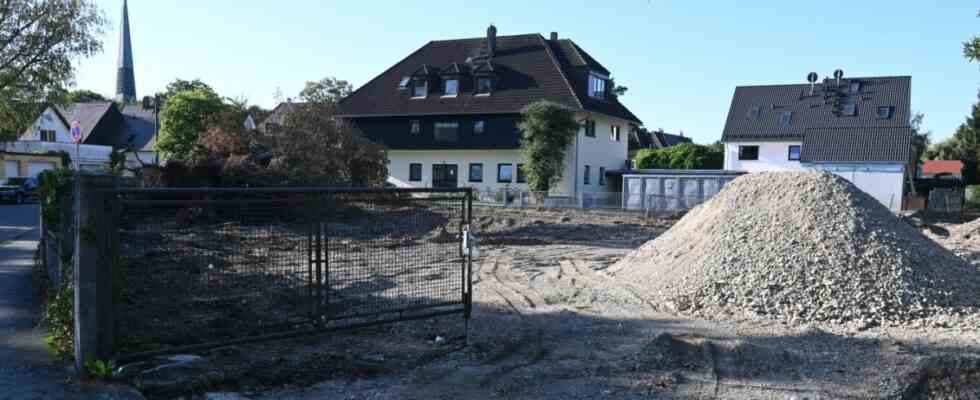During the brutal demolition of an old house in a residential area in Oberschleißheim, several environmental sins may have been committed at the same time. Improper removal of the oil tank could have caused oil to seep into the ground, possible asbestos panels were left unprotected and there is apparently a suspicion of contaminated sites on the property that was not investigated. In addition to the responsible authorities, the criminal police are also investigating various environmental crimes.
Residents had already alerted the police and fire brigade last November because the facade of the building had been demolished “grossly against the rules,” according to a police spokesman. The forces summoned came across parts of the facade cladding that appeared to be suspect asbestos, but were scattered around the site completely unprotected. At that time, Commissariat 13 of the Munich Criminal Police Department for Environmental Crimes already opened an investigation file into the illegal handling of waste. According to the district office, the panels were “disposed of and removed” at the time.
The improper disposal of an old oil tank occupies the authorities
Now the demolition continued. While working with heavy equipment, residents noticed a strong smell of oil and alerted the police again. When they were alerted, an oil tank could no longer be found, it is said, but the smell of oil was detectable. The old house’s oil tank, which was not specially treated, was probably damaged during the demolition, so that oil could leak out. At the instigation of the water management office, which had also sent an inspector to the construction site, the Munich district office issued an order according to which the client must arrange for soil samples to be taken.
This is to determine whether, how far and how much oil has seeped into the ground. Christian Leeb, head of the Munich water management office, expects that the groundwater will not be reached in the short term, so that he fears “no immediate damage to the groundwater” thanks to the timely intervention, as he says. In the course of the investigation, a subsoil report is said to have appeared, which served as the basis for the new building projects. A suspicion of contaminated sites is said to be noted therein, which was ignored and not reported to the authorities. When the inspectors visited, old demolition concrete could now be seen in a dug pit.
The criminal police are initially investigating unknown persons, because only in the course of the investigation can it be seen whether the client or the demolition company carrying out the work would be responsible for any crimes.
(Photo: Stephan Rumpf)
The house on a bend in Haselsberger Strasse in the oldest residential area in Oberschleißheim was probably once owned by a construction company. For the new development, the 1850 square meter property has now been divided into four plots, on each of which a single-family house is to be built. Three of them have already been approved, the planning application for the fourth is currently in the Oberschleißheim town hall and will be on the agenda of the municipal holiday committee in mid-August. The seller of the property probably commissioned the demolition before the division.
The criminal police are initially investigating unknown persons, because only in the course of the investigation can it be seen whether the client or the demolition company carrying out the work would be responsible for any crimes. The district office confirms that the property was “involved several times”, but further details could not be given because the investigations were still ongoing. One of the reasons why the police were called by residents turned out to be not illegal: the clear-cutting of the trees on the property, a juniper and two cypresses, was not illegal. The removal of the trees was indicated in the respective building applications and approved by the Oberschleißheim town hall. The plans envisage planting a total of six new trees.

